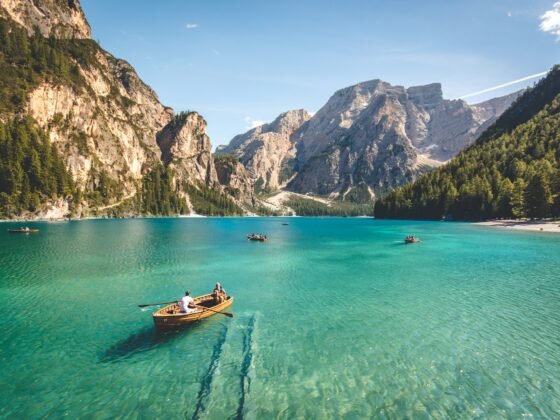In cold climates, snow and ice are more than just seasonal annoyances; they transform our landscapes into precarious terrain. Especially when you are travelling in northern or mountainous climates where the snow and ice can be very hazardous. If you come from a warm climate you may not be used to dealing with such climates and hazards and it can become pretty tricky to avoid having an accident. And who wants to wreck their holiday by twisting an ankle on the ice or breaking a limb in the snow? You might need some assistance if you do fall prey to the hazards of an icy winter but who bears the responsibility when such a tumble lands you with a broken bone and a legal headache?
Understanding the intricacies of premises liability in winter can be as treacherous as navigating a black ice patch, but fear not, for this guide aims to equip you with the knowledge to tread safely through this frosty legal landscape.
This article will illuminate the often-opaque concept of premises liability in winter, exploring the obligations of property owners and the rights of visitors when icy conditions reign. We’ll delve into the “reasonable care” standard that governs these situations, untangling the legal knots surrounding snow shoveling, warning signs, and proper maintenance.
Armed with this knowledge, both property owners and visitors can embrace the beauty of winter without fear of unexpected falls and costly legal woes.
So, pull up a warm chair, grab a steaming mug of cocoa, and join us as we navigate the slippery slope of premises liability in cold climates.
Unveiling the Responsibilities of Property Owners in Winter
As snow blankets the world in a silent hush, property owners take on a new role – custodians of winter’s treacherous grip. The pristine white cloak, while undeniably picturesque, harbors hidden dangers, transforming sidewalks and driveways into icy battlegrounds.
According to the Los Angeles premises liability attorneys at PSBR, the bedrock of premises liability in winter rests on the principle of “reasonable care.” Translated into plain terms, this means property owners must take reasonable steps to protect visitors from foreseeable hazards arising from snow and ice accumulation.
So, what constitutes “reasonable care” in this icy landscape? The answer, unfortunately, isn’t etched in frost on a frosted windowpane. It depends on a multitude of factors, like the severity of the weather, the type of property, and the frequency of use.
However, some general guidelines provide a compass for navigating this legal labyrinth.
Firstly, the timely removal of snow and ice, particularly from high-traffic areas like walkways and entrances, is paramount. Ignoring this icy elephant in the room can easily morph into a legal liability. While the exact timing might vary depending on weather conditions, consistently leaving icy patches to their own devices is a recipe for trouble, both for unsuspecting visitors and the owner’s wallet.
Secondly, clear and conspicuous warnings can act as safety nets, catching any missteps before they turn into full-blown falls. Signs alerting visitors to potential hazards, especially black ice patches or areas under snow removal progress, can demonstrate an owner’s proactive approach to safety, potentially mitigating liability in case of an accident.
Finally, maintaining the integrity of walkways and drainage systems becomes crucial in winter.
Uneven surfaces, broken sidewalks, and clogged drains can act as hidden traps, waiting to spring their icy surprises on unsuspecting feet. Addressing these issues promptly minimizes the risk of falls and demonstrates the owner’s commitment to providing a safe winter environment.
Of course, even the most diligent property owner can find themselves on the receiving end of a slip-and-fall claim.
Tips for Safe Footing as a Visitor
While property owners bear the brunt of legal responsibility for safe winter conditions, visitors too have a role to play in navigating this frozen landscape. By adopting a proactive approach and embracing common-sense precautions, we can transform snowy journeys into delightful adventures, free from the sting of icy falls and legal entanglements.
Firstly, equip yourself for the terrain. Sturdy boots with good traction aren’t just fashion statements; they’re your frontline defense against treacherous patches of black ice. Leave the sleek stilettos and flimsy sandals for warmer days, opting instead for footwear that grips like a mountaineer’s crampons. Remember, fashion fades, but a broken ankle lingers long after the snow melts.
Secondly, embrace the art of cautious contemplation. Don’t let the seasonal cheer mask potential hazards. Scan your path for icy patches, areas shaded from the sun where snow lingers, and uneven surfaces that could become treacherous underfoot. A moment of mindful observation can prevent a lifetime of regret.
Thirdly, remember, haste makes waste, especially on winter sidewalks. Slow down your pace, shorten your strides, and avoid the temptation to rush. Elegance on ice is measured in deliberate steps, not speedy sprints.
Fourthly, don’t be afraid to speak up. If you encounter a particularly hazardous area, politely inform the property owner or manager. By proactively highlighting potential dangers, you contribute to a safer environment for everyone, potentially preventing future accidents.
Finally, acknowledge your own responsibility. While property owners have legal obligations, visitors cannot absolve themselves of personal accountability. Distracted phone scrolling, reckless behavior, and ignoring obvious warnings can also contribute to slip-and-fall incidents.
Be present, be mindful, and remember, winter’s wonderland requires an attentive audience, not a distracted one.
By following these simple tips, visitors can become active participants in winter safety, minimizing the risk of accidents and fostering a culture of shared responsibility.












